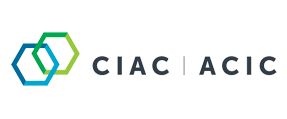Provincial Actions Regarding COVID-19
April 29, 2020
Over the past week, provinces across the country have begun rolling out plans to open their respective jurisdictions in phases. New Brunswick, PEI, Manitoba, and Saskatchewan are among the provinces that have been less affected by the pandemic and are taking immediate steps to gradually open their economies.
Other provinces that have been more severely affected by the pandemic have also announced plans to open their own provinces, but the timelines won’t be nearly as immediate, especially in Ontario which is taking a cautious approach where certain benchmarks will have to be met before relaxing social distancing measures.
Alberta
Alberta has signalled the pending release of a relaunch strategy to cautiously restart the economy. The Premier mentioned a re-launch framework in his State of the Province address in early April focussed on aggressive testing, tracing and tracking, border screening, and use of masks – all in the context of declining COVID-19 cases.
Ontario
Ontario released A Framework for Reopening our Province, which outlines the criteria it will follow to loosen emergency measures, as well as guiding principles for the safe, gradual reopening of the economy and public gatherings. The framework is a plan for how the province looks to re-open the economy, not when. The key criteria of the plan includes consistent decreases in new COVID-19 cases, health system capacity and PPE supply, public health system capacity, and case tracking, tracing and ongoing testing.
The reopening framework will involve a carefully monitored three-staged approach with each stage consisting of 2-4 week periods. Protections for vulnerable populations and the continued practice of physical distancing, hand washing and respiratory hygiene, and significant mitigation plans to limit health risks will remain in place. To resume activities safely, workplaces must create a plan that promotes and adheres to strict hygiene and sanitation standards, and physical distancing to the extent possible. The province has also increased its labour inspection and health and safety call centre capacity.
The reopening framework also provides details of an outreach strategy, led by the Ontario Jobs and Recovery Committee, to help inform the restart of the provincial economy. CIAC will stay engaged with provincial officials and participate in consultation opportunities.
Ontario launched a new website for businesses to submit requests for temporary regulatory relief measures. CIAC’s requests, submitted earlier this month, to extend a number of reporting deadlines are being reviewed by officials and do not need to be re-submitted. The province is also pausing or extending any existing public consultations, delaying non-urgent related consultations while the emergency situation remains in place, and considering extending deadlines for reports and audits.
Québec
Quebec Premier François Legault announced that construction sites, manufacturing companies, and businesses with an external door will gradually be able to reopen in May. This recovery, long announced as gradual, will therefore take place on a geographical and sectoral basis. As a result,
- The retail sector will return to life on May 4 across Quebec, except for the greater Montreal area, which will have to wait until May 11. This is because the coronavirus epidemic is more prevalent in the greater metropolitan area than elsewhere in the province.
In terms of construction, activities will resume on May 11 across Quebec, as will manufacturing companies. In both cases, the greater Montreal area will have to wait for the public health green light.





